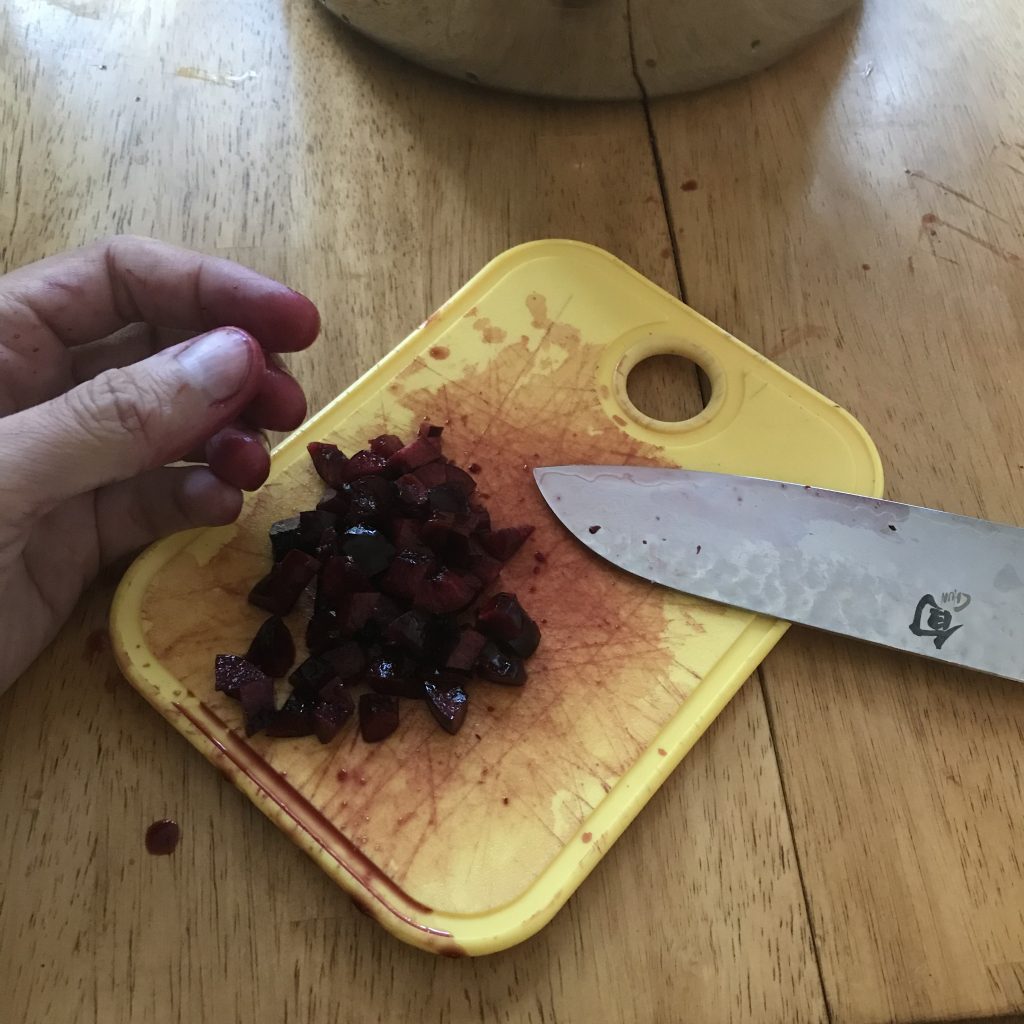I have a cherry tree that was planted by the previous owner of this home, and since I bought the property in 2013 it must now be at least six years old. It has produced fruit three years in a row that I know of. Here is a picture of it that I took on May 4th 2019.
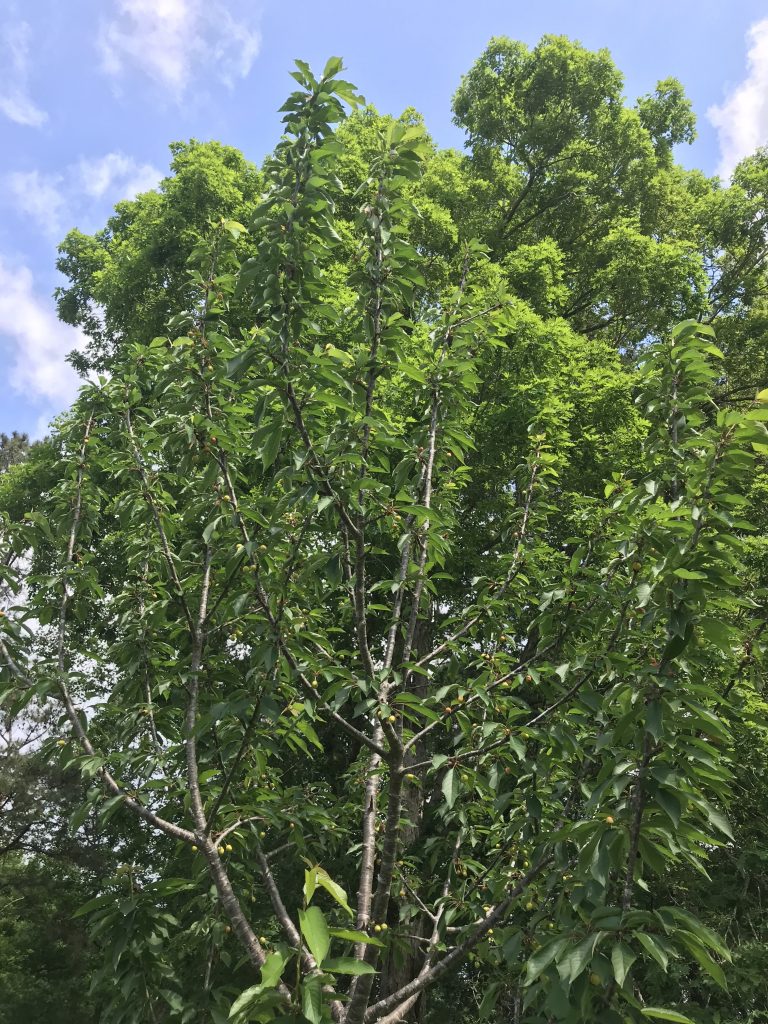
If you have particularly sharp eyes, you might see that there are a lot of green cherries all over this tree. I got pretty excited about this time, and checked my records to see that I got about 1½ gallon of cherries on May 15th last year. But I ended up very disappointed, because the birds got most of the cherries. I think on the 7th I went out with a ladder to get as much as I could, and ended up with maybe a quart. Hardly enough to do anything.
Since I still had the itch, I asked about cherries at the State Farmers’ Market in Raleigh (I’m particularly blessed that I live only 15 minutes away and actually drive past it several times a week in the normal course of business). I learned that cherries are not typically farmed in North Carolina, and I wasn’t likely to get them there at any point.
I finally got somewhere at the end of May, when I saw cherries from California in the Food Lion supermarket for $2.99 / lb. That’s not a killer bargain, but it is much lower than the regular price of $6.99 / lb, so I got something like eight pounds and jammed them up.
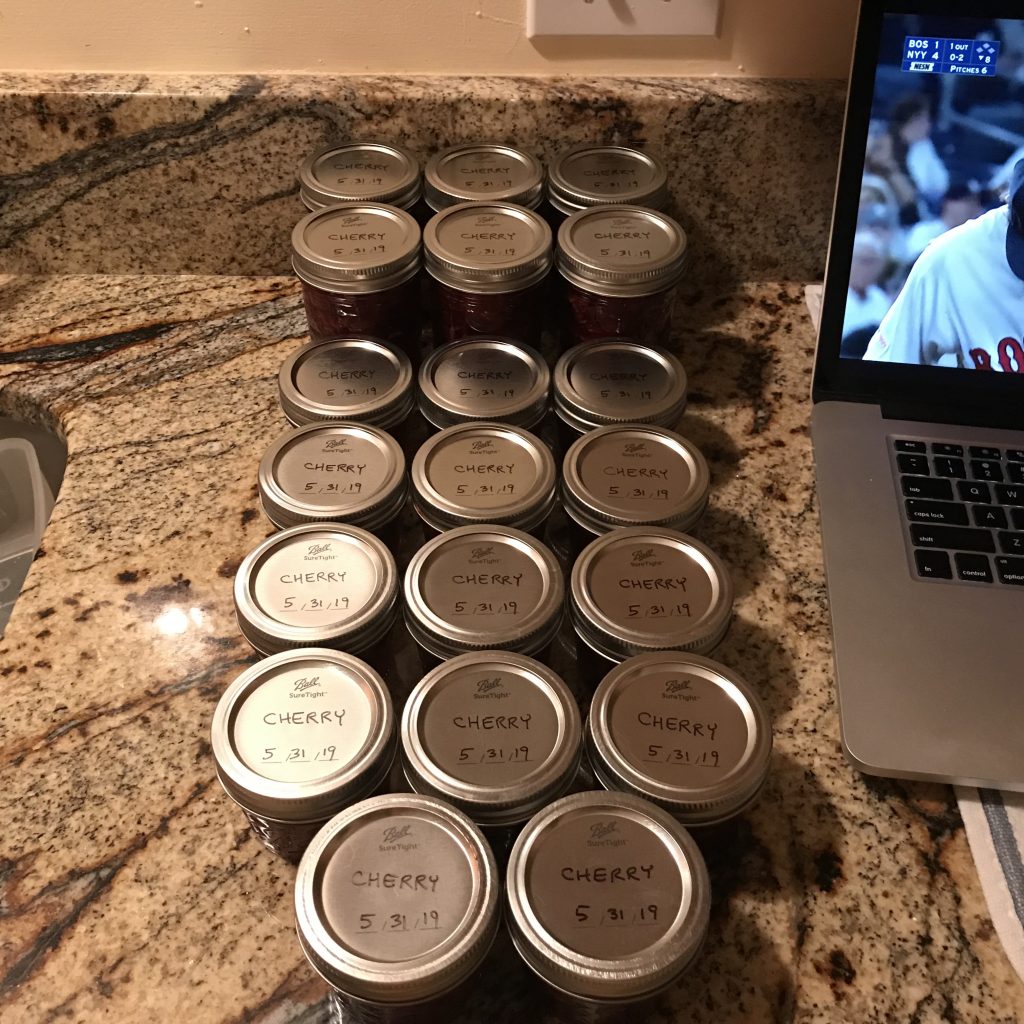
Looks like I made six 8-oz jars and fourteen 4-oz jars, and if we take the jar capacities at face value that means we made 104 ounces, or 6.5 pounds of cherry preserves. Of course this stuff didn’t last very long. I kept the big jars for myself and gave away pretty much all of the small ones. Suffice to say my supply is dwindling rapidly.
And then yesterday I saw that California cherries are on sale at the Harris Teeter supermarket for $1.99 / lb. So maybe I’m just a sucker, but I bought myself 16 pounds, and as we say here in North Carolina now “I’m fixin’ to” jam them up.
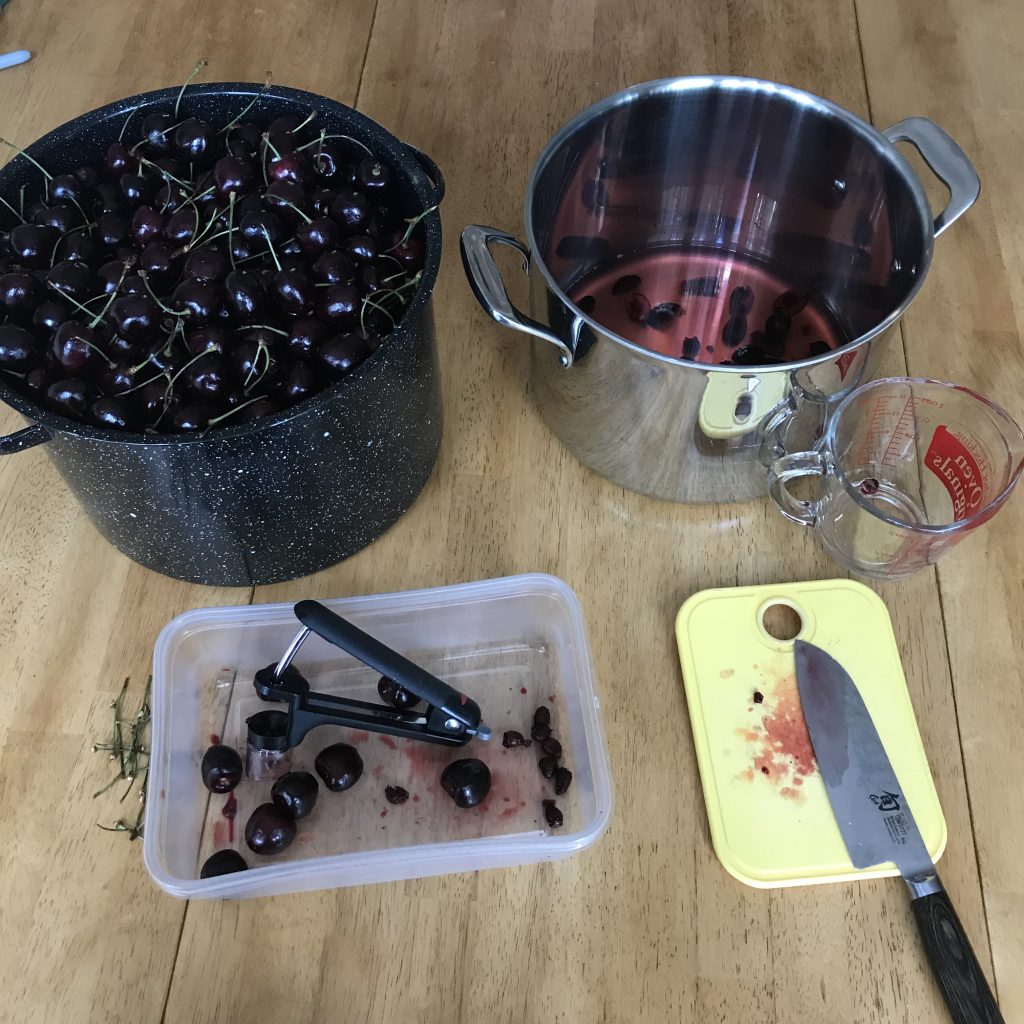
Processing these cherries took a very long time. My cherry pitter is made by Oxo and is easy enough to use, but make sure you press the tool against the bottom of the tupperware, because it does splatter a bit and the juice is bright red and staining. In fact, go ahead and change into black clothes while processing cherries, you’ll thank me later.
Also, cherries oxidize and turn brown rapidly in the air, although it’s a bit harder to see than it is for apples and pears because the fruit is already so dark. You can control that with lemon juice or citric acid. In the above photo you can see I have about 2 cups of water with citric acid dissolved into it in that stainless pot, and as I added more diced fruit I stirred it up continuously to keep the fruit wet.
I ended up doing this in two batches of about eight pounds each. I forgot to take a picture of the diced cherries before cooking, but here’s a pic right after adding sugar and pectin and starting the heat.

Some people like to crush the fruit more to get a less chunky jam. If you want to do that, cook for a while until the fruit softens up, and then use a potato masher or an immersion blender. I didn’t do that in this batch. I cooked this on medium heat, stirring occasionally. Here’s what it looked like right before canning:
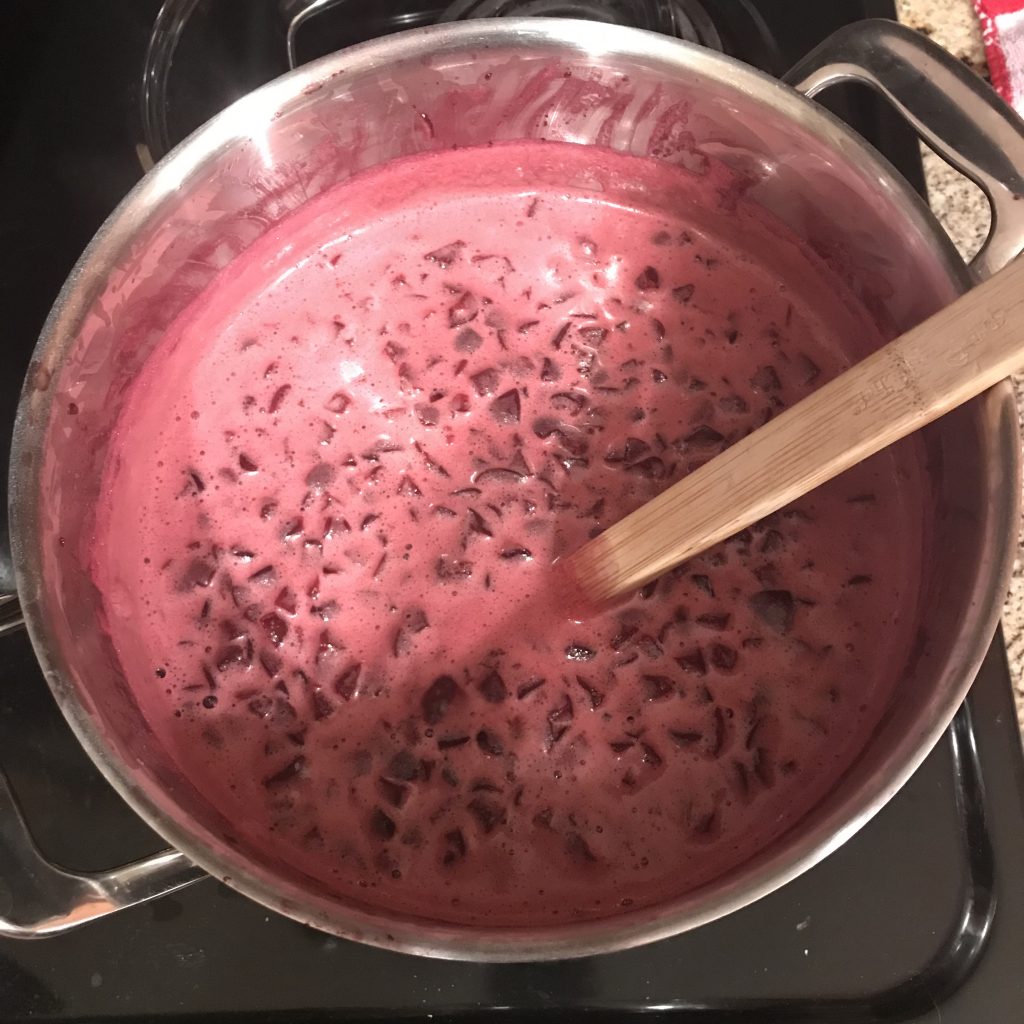
That is a foam forming on the top of the mixture. Some recipes tell you to skim the foam off, but I don’t bother and it doesn’t seem to make my jam cloudy or foamy. I prepared four-ounce and eight-ounce jelly jars, and once the fruit began boiling such that stirring didn’t stop the boil, then I started ladling the mix into the jars.
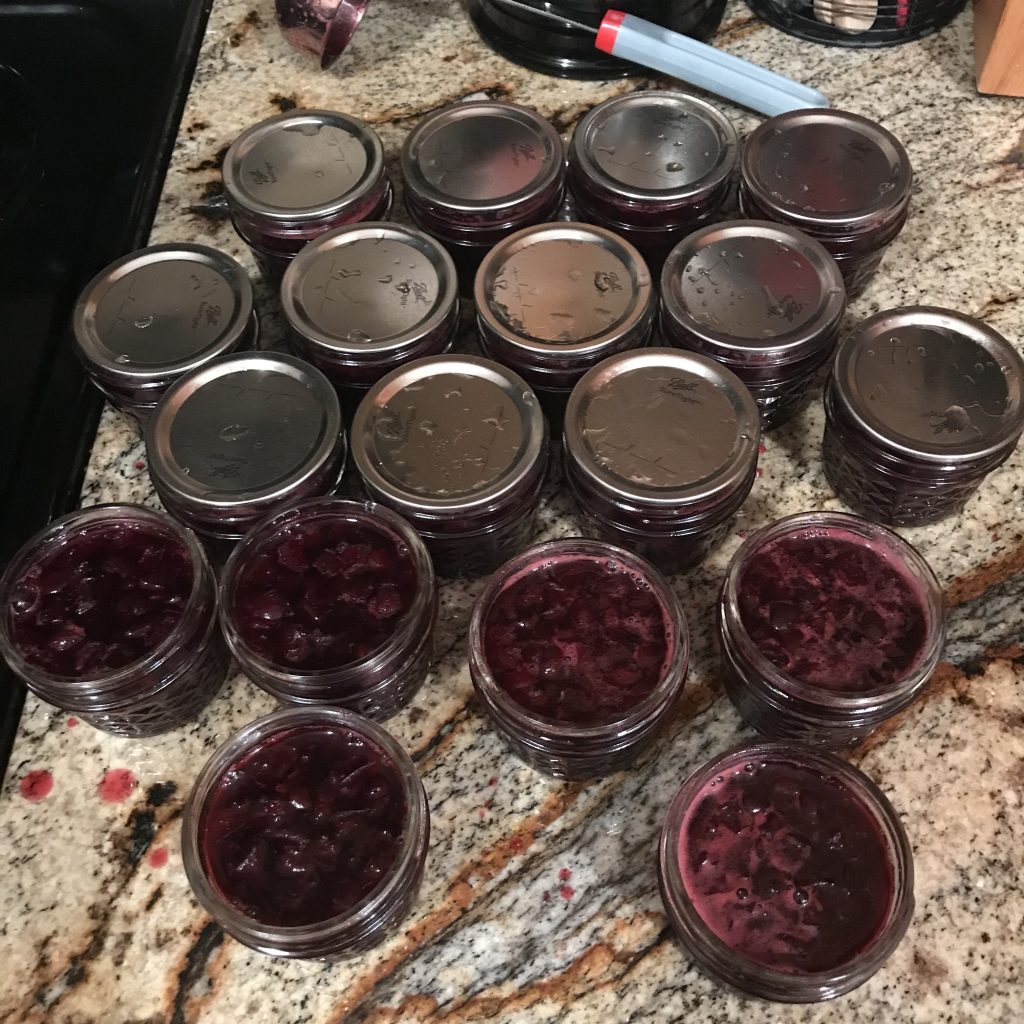
I ended up making the jam in two separate batches, each approximately eight pounds of cherries. (The recipe below was made exactly the same twice to consume 16 pounds of cherries.) Here’s a picture of the total yield: eleven 8-oz jars and thirty-nine 4-oz jars.
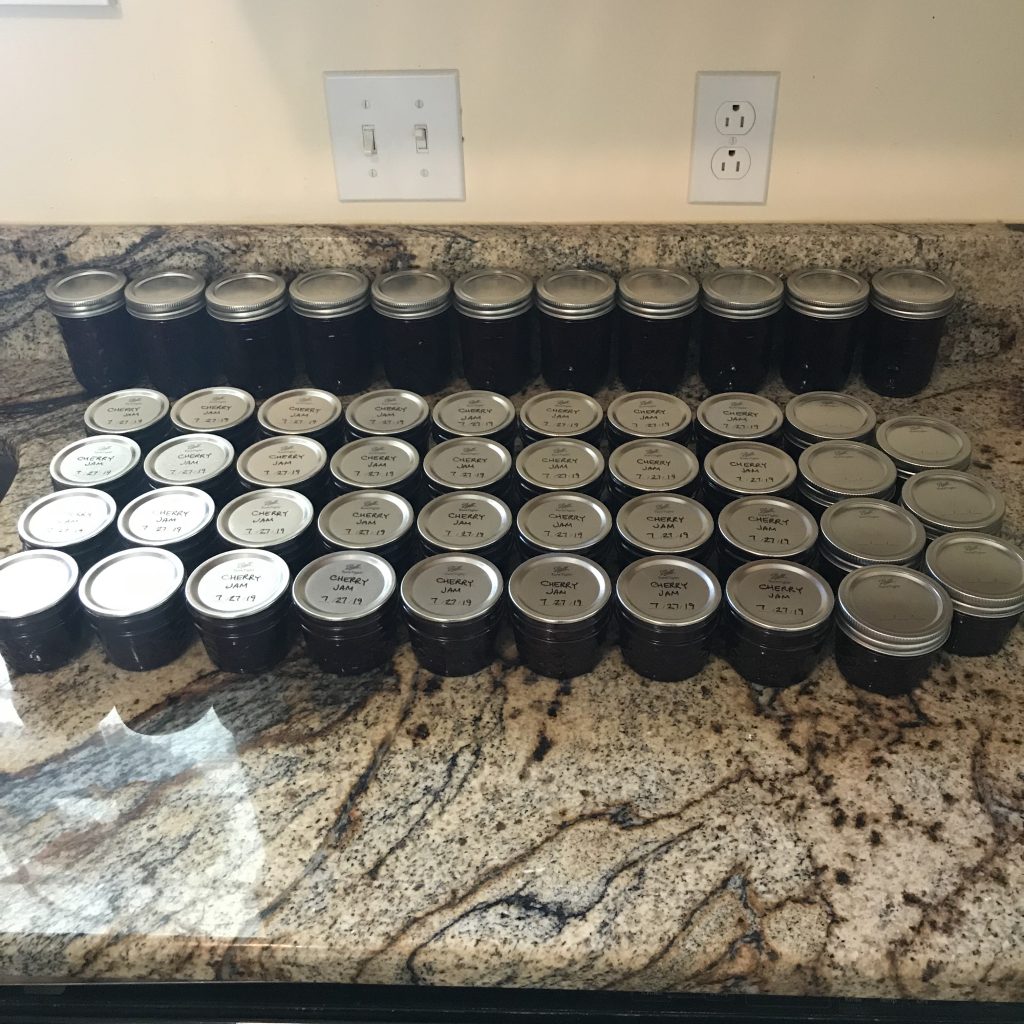
If we take the jar capacity at face value, this means 244 ounces total, or 15¼ pounds of jam. This sounds very plausible, based on starting with a bit more than 16 pounds of fruit, and then processing, simmering down, and adding sugar, pectin, and citric acid.
You’ll probably notice when you read the recipe below, that I don’t use a lot of sugar. If you compare with other recipes, you’ll see that they vary widely and almost all of them use a lot more sugar than I do. I like my jams a bit on the tart side to let the fruit flavor come through, and these cherries were particularly sweet already. Of course I taste it before canning, and I can vouch for this jam being sweet and flavorful.
I find the 4-oz jars make excellent gifts, while I generally reserve the tall ones for myself. That’s why I made so many small ones this time. Unfortunately the jars are one of the biggest costs: between $9.50 — $13 for a box of 12 depending on the size and shape of the jar (mentally I always estimate $1 a jar). So I try to get my friends and family to give the jars back, but of course they don’t all find their way home.
As always, I want to hear about your experience. Leave me a comment and share your experience, and of course ask any questions you might have. I’ll do my best to answer.
Canned Cherry Preserves
Yield: About 120 ounces / 7½ pounds of jam
8 pounds cherries
8 tsp citric acid in 2 cups water
3 cups sugar
9 Tbsp low-sugar pectin
Remove pits and stems from cherries. Dice cherries into quarter inch chunks and mix into the citric acid mixture.
Mix sugar and pectin together in a bowl, and blend into the fruit mixture. Return fruit to boiling and leave there at least 20 minutes before proceeding, stirring every few minutes or so. If desired, mash some or all of the chunks with a potato masher or use an immersion blender after the fruit softens.
Sanitize canning jars in water bath canner. Sanitize new lids separately in a small pot of simmering water, but don’t boil too long or the sealing wax will fall off. Ladle the fruit mixture into the jars, leaving at least ½ headspace in each jar. Wipe the rims of the jars with a wet paper towel. Cover with lids and twist on the rings finger tight (they should not be super tight because air needs to escape during the canning process).
Process in the water bath canner for 10 minutes (start the timer after the water boils), Remove jars from the water and let cool undisturbed 24 hours. Verify the lids have popped down and that seals have formed. Remove rings and test seals by lifting the jar off the ground with one hand touching only the edge of the lid. If the lids are sticky, immerse the jars in cool water for 10 minutes and wipe clean. Store jars without rings in a cool location out of sunlight for up to 12 months.
The pectin will jell over the next several days. You can speed it up by refrigerating the jar, after which the jell will remain even if you take it out of the fridge.

